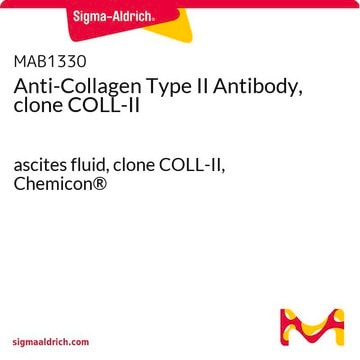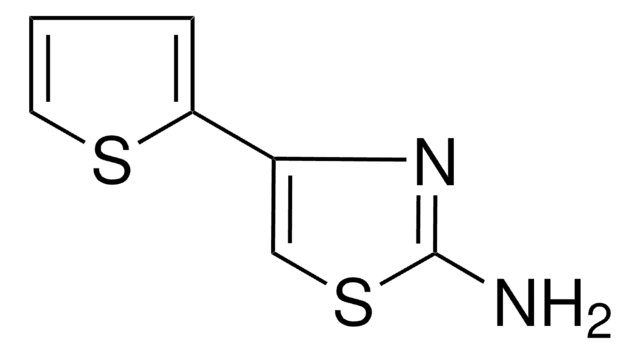MAB8887
Anti-Collagen Type II Antibody, clone 6B3
clone 6B3, Chemicon®, from mouse
Sinónimos:
Anti-Anti-ANFH, Anti-Anti-AOM, Anti-Anti-COL11A3, Anti-Anti-SEDC, Anti-Anti-STL1
About This Item
Productos recomendados
origen biológico
mouse
Nivel de calidad
forma del anticuerpo
purified immunoglobulin
tipo de anticuerpo
primary antibodies
clon
6B3, monoclonal
reactividad de especies
human, chicken, mouse, salamander
fabricante / nombre comercial
Chemicon®
técnicas
immunofluorescence: suitable
immunohistochemistry: suitable
western blot: suitable
isotipo
IgG1
Nº de acceso NCBI
Nº de acceso UniProt
Condiciones de envío
wet ice
modificación del objetivo postraduccional
unmodified
Información sobre el gen
human ... COL2A1(1280)
Especificidad
Its epitope is localized in the triple helix of type II collagen. It shows no cross-reaction with type I or type III collagen. Immunoblotting of CNBr peptides of collagen II shows that MAB8887 reacts with CB11 (25kDa) fragment which is the site of immunogenic and arthritogenic epitopes along the intact type II molecule.
In pepsin solublized collagen II, MAB8887 reacts with a 95-97 kDa fragment, as well as, the native single chain of 120kDa. If propeptides are present, MAB8887 will detect a 200kDa fragment.
Inmunógeno
Aplicación
Cell Structure
ECM Proteins
Immunohistochemistry (Formalin/Paraffin): 1-2 μg/mL, 30 minutes at room temperature. Staining of paraffin embedded tissues requires digestion of tissue sections with pepsin at 1mg/mL in Tris HCl, pH 2.0 for 15 minutes at RT or 10 minutes at 37ºC.
Immunofluorescence
ELISA
Optimal working dilutions must be determined by end user.
Descripción de destino
Forma física
Almacenamiento y estabilidad
Nota de análisis
Cartilage in lung or fetus
Otras notas
Información legal
Cláusula de descargo de responsabilidad
Not finding the right product?
Try our Herramienta de selección de productos.
Código de clase de almacenamiento
12 - Non Combustible Liquids
Clase de riesgo para el agua (WGK)
WGK 2
Punto de inflamabilidad (°F)
Not applicable
Punto de inflamabilidad (°C)
Not applicable
Certificados de análisis (COA)
Busque Certificados de análisis (COA) introduciendo el número de lote del producto. Los números de lote se encuentran en la etiqueta del producto después de las palabras «Lot» o «Batch»
¿Ya tiene este producto?
Encuentre la documentación para los productos que ha comprado recientemente en la Biblioteca de documentos.
Los clientes también vieron
Nuestro equipo de científicos tiene experiencia en todas las áreas de investigación: Ciencias de la vida, Ciencia de los materiales, Síntesis química, Cromatografía, Analítica y muchas otras.
Póngase en contacto con el Servicio técnico







